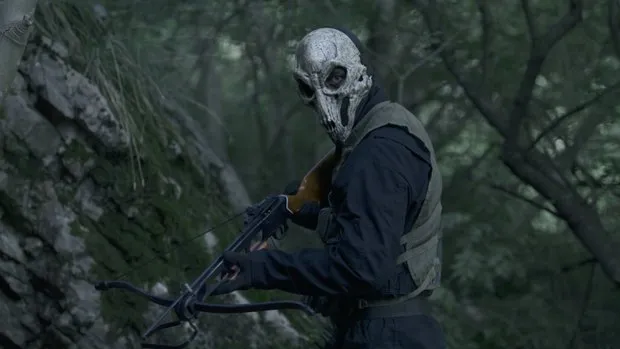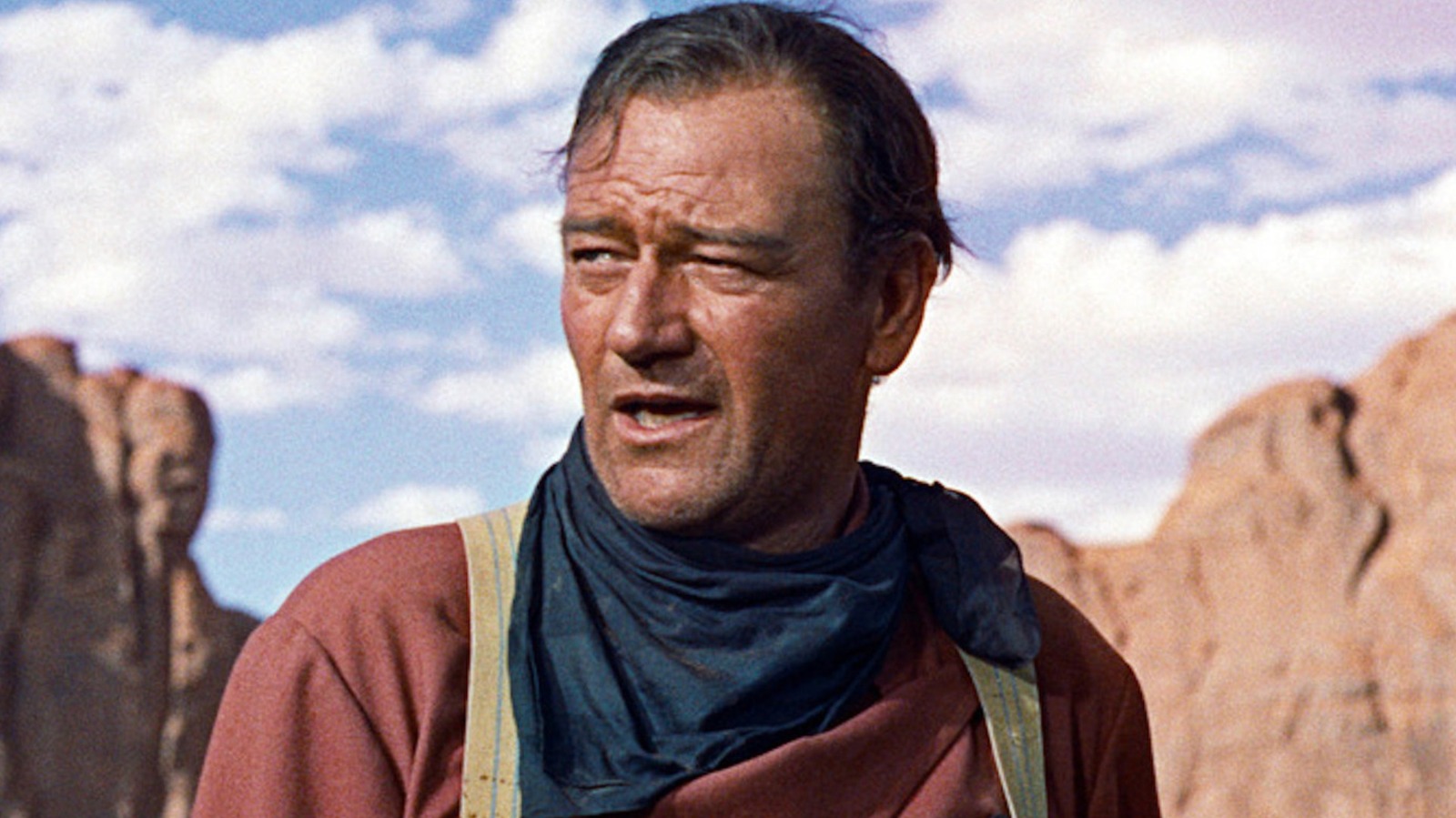Copyright Deadline

From Halloween, the Genesis Cinema in London is conducting an experiment in terror — until the end of 2025, the independent East End venue will be screening the latest experimental film by British director Paul Raschid. Called The Run, it’s a survival horror set in Northern Italy, in which a female fitness instructor/influencer is besieged by violent men in mysterious masks. The novelty here, however, is that no two houses are ever likely to have the exact same experience during the film’s two-month residency — as voted for by the audience, Raschid’s lead character will make a serious of choices that will navigate her through some 20 unique deaths to one of five or so possible endings. Adding to the charm is that the audience will be given glowsticks with which to register their votes, an old-school method that its tech-savvy makers chose on purpose. Says Paul, “We’ve tested apps on mobile phones, et cetera, and we found that, actually, it works against us. One reason is connectivity — cinema operators don’t want you to have a good wifi connection — and the second is that it actually took people out of the experience. The moment you look down at your screen, you’re out of the story.” This is common, of course, in gaming, but not so much in the traditional cinema world, and Raschid’s films have been especially popular lately with festivals all over the world. The director first entered the interactive space after making his second film, The White Chamber, in 2018. “It put me on the map, in terms of my career,” he recalls, “and at the beginning of 2019 I got approached by a producer called John Giwa-Amu, who works out of Wales, with Red and Black Films. He was just getting into this field of interactive films, and Bandersnatch, the [interactive] Black Mirror episode, had just come out. He said, ‘I saw The White Chamber, and I like what you did. I have a similar sci-fi thriller project called The Complex that we’re developing and we think you’d be a good fit.” Working with Giwa-Amu led to another film, Five Dates (2020), before Raschid set out on his own, with his producer father Neville, to make The Gallery (1981 and 2021), Hello Stranger and The Run (both 2025). Speaking to Deadline, Raschid Sr. revealed that the screening schedule is a trial run for a more ambitious project. “If the residency is successful,” he said, “then in 2026 we hope the Genesis will run a 12-month program, titled the Interactive Film Club, screening Paul’s earlier films, amongst others.” Deadline sat down with the duo to discuss the nuts and bolts of interactive filmmaking. DEADLINE: Where do you start with an interactive film project? With the writing? PAUL RASCHID: Basically, instead of just having a screenplay, you have two main pieces of literature, and the first thing you start with is a flowchart. I start all of the films I make with a flowchart. That’s the Bible, that’s the structure, it’s the skeleton. And I think the thing that’s liberating — that’s limiting and liberating, both at the same time — is that I don’t put pen to paper on a script until I’ve locked that structure. The old adage says you write your films three times: first when you write it, again when you shoot it, and then again when you edit it. With interactive, it’s harder to unpick that structure, because it’s all so interwoven. There’s causality and cause and effect. A decision that you make at the beginning will have a payoff at the end, so you can’t start moving things around after that. Once you’ve locked your structure and your flowchart, you can’t really change it afterwards. It would break the whole thing. Whereas, in a linear film, you could [make changes in] the edit. But then again, the flip side of that is that’s why some films end up in hell. So, I make the flowchart first, and I make sure that I’m happy with the story, that I’m happy with the characters, and how all the decisions fit into the grand scheme of things. And then, I write the script, which is then kind of in the form of a choose-your-own-adventure book. DEADLINE: How does that work? PAUL: In a choose-your-own-adventure book, you’d have a page that goes, “Paul steps out onto the street — does he want to turn left, or does he want to turn right? If he wants to turn left, turn to page three. If he wants to turn right, turn to page ten.” So, in accordance with the flowchart, I write scripts that work in exactly the same way. And from that, armed with those two key documents, it then kind of works out the same way it would with any other script. But then in post you have an extra department — your game-engine department — and these are the people who build it. They take the scenes and stitch them all together in a game engine that links them all together, that you then play in the cinema and release on the gaming platforms. DEADLINE: People will understand this on a gaming platform, but how does it work in a cinema environment? PAUL: In the cinema environment, we basically plug a laptop with the game build on it into the projector or whatever system they have there. Literally, we give the audience glow sticks when they come in, and anytime there’s a choice to be made, the options will appear at the bottom of the screen. The screen freezes momentarily. Anyone who wants to vote for option one raises their glow stick, anyone who votes for the second option does the same. I eyeball it, and whichever option is the most popular, that’s the one that gets selected. So, they’re building the story together. All the good and the bad things that could happen are all basically on the shoulders of the audience. DEADLINE: Do the audience’s choices ever surprise you? Do you ever worry that people will be perverse and choose the darkest option? PAUL: Not at all. I think that’s the beauty of it, the “what-if?” nature of it. We’ve reached a point in cinema discourse where audiences have become so familiar with the traditional structures of filmmaking, they know what a screenwriter would pick in a traditional movie. I think a lot of them like the idea of being able to explore the other options, like, “If this was a linear film, I know what the character would do, but I have these other options…” You see it in video games like Grand Theft Auto or whatever — once you give people control of a character, they want to explore the possibilities of what that character can do. It’s been really interesting, seeing the trends, because some audiences make very similar decisions, whereas other audiences make completely different decisions. And there’s also the whole psychology of how being in a group environment changes what you would vote for, as opposed to playing a game by yourself. But it’s all really encouraged. I wouldn’t want to try and make people feel like, OK, so we’re being given a choice, but there’s only one real right answer. That’s what I try to avoid when I’m structuring these things. I mean, obviously, with a film like Hello Stranger it’s a bit different, because the nature of it is that if you make the wrong choice, the protagonist is going to die! But I do want to try and make films where you can make different choices that will then have a trickle-down effect, and there’s nothing that’s the wrong choice to make or the right choice to make, in terms of building the story that you want to build. DEADLINE: Roughly how many permutations of the story can there be? PAUL: So, there’s ten different endings of Hello Stranger, and, in total, there’s about four and a half hours of edited footage. That’s the total pool. But an average playthrough would be between 40 minutes and up to 75 minutes, so within one playthrough, you’re going to play a fraction of the total pool of footage that you have. I mean, it’s hard to calculate. I’d probably need to put it into some kind of ChatGPT program to calculate the actual number of distinct permutations you could play, but it would be a big, big number. NEVILLE RASCHID: In The Gallery, in the 2021 version, there were six different endings. I mean, in one ending the protagonist lives, in another ending the protagonist dies, and in another ending, the protagonist lets the other person live, and so on. It’s just fantastic. I mean, at your three o’clock screening your protagonist could live, and at your 6 o’clock screening the protagonist could die. It’s that rich and it’s that exciting. I mean, I find it really quite exhilarating that there’s this new film language. DEADLINE: How do actors feel about it? PAUL: It is a different language, in that sense. But what I’ve found is the actors who have had theatre training, in particular, tend to take to it really, really well. There’s something quite liberating about it for actors. In a linear film, eventually, you have to zero in on making a definitive decision, so that there’s a consistent throughline with who your character is. Whereas, in an interactive story, you can keep a lot of those things that you would otherwise discard. You can keep them, use them, and actually explore them in the different branches of these stories. Some actors don’t really take to it that well, but a lot of actors really do. George Blagden, who’s the lead in Hello Stranger, is a very special case. He’s a gamer, he’s very tech-savvy, so branching narrative is something that’s been really interesting to him, creatively, beyond just having all of that training that he did at Guildhall. So, beyond having the training to actually do it, he has a real interest in this form of storytelling. I mean, it does vary. But I generally find that actors who have been on stage, or had some kind of performative training, are the ones who can pick it up a little bit quicker. DEADLINE: One last question for both of you. What do you hope for the future of interactive film? NEVILLE: There was a time when 3D and IMAX were thought of as gimmicks, right? They’re now regarded as part of the mainstream. I’d love to see a time when the interactive film grew from being event cinema into something more regular. PAUL: Yeah. In a lot of the early interviews I did, people were asking, “Is this going to replace traditional films?” I said, “No, absolutely not.” But I think what’s important is for cinema to keep evolving and modernizing, to give audience members alternative ways to experience content rather than just the traditional lean-back experience, which I think, especially the younger audience, are getting less and less interested in. So, that’s from a cinema point of view. But, for me, what I would love is for us to be able to have a solid route to market on smart TVs in the film and TV home entertainment world. That’s sort of, for me, the final frontier in terms of exhibition, because we have this ability to have a product that can be released to the gaming market in one way, in one guise, and then also, to the film and TV market audience in another. It’s not quite there yet, but, in the immediate future, that’s what I would love to see.



